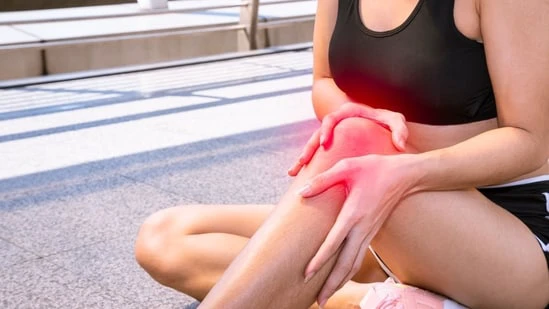Joint pains can come uninvited at any age and stage of your life. Whether you’re in your 30s or 60s, feeling the stiffness, hearing the sound of your bones cracking and elbows creaking are signs that your bones and joints need care.
According to a physiotherapist, the earlier you start taking care of your bone and joint health, the better your quality of life will be in your later years.
“As a physiotherapist, I come across patients every day who delay care until it is too late. But you can still stay mobile, pain-free and independent in later years of life with the right lifestyle in your younger years,” Dr Prachi Sarvaiya (PT), Assistant Professor, Department of Musculoskeletal Physiotherapy, K J Somaiya College of Physiotherapy, Mumbai, tells Health Shots
7 simple tips for healthy bones and joints
Following these bone health tips to reduce the risk of debilitating joint pain that may affect your physical function, could help in healthy aging:
1. Don’t ignore the pain
Pain, stiffness, or swelling are the warning signs and red flags given by your body when asking for help. Ignoring early signs can lead to long-term complications that affect your bones and joints health. “Contrary to popular belief, joint pain is not a natural consequence of aging. In fact, how we treat our bodies over time-our activity levels, posture, diet, and daily habits-plays a very crucial part in our bone and joint health,” says Dr Sarvaiya.
Early diagnosis, orthopedic consultation, and physiotherapy can support bone and joint health. With the right habits and awareness, we can age gracefully and have a healthy and pain-free life ahead.
2. Stay physically active
Regular physical activity enhances your bone and joint health. Aim for moderate exercise for at least 30 minutes a day, at least thrice a week. This can include something as simple as walking, cycling, doing yoga, playing sports, or dancing. Remember to start with a warmup and end with a cooldown and stretching.
3. Maintain healthy bodyweight
A balanced diet and regular physical activity can help maintain your Body Mass Index (BMI) within normal limits. Excess body weight can increase the stresses on joints and make it difficult to move freely. Expose yourself to early morning sun rays for 15 minutes a day and add a calcium-rich meal to your diet to ensure you are getting adequate calcium and vitamin D, which are two of the most critical nutrients for bone health.
4. Stay hydrated
Water helps to keep the bones’ cartilage soft and lubricated, which helps reduce the friction between them. Aim for 10-12 glasses of water a day.
5. Maintain good posture
Poor posture can lead to long-term spine and joint issues. Practice proper posture during standing, walking, sitting, lifting, and even sleeping. Ergonomic workspaces and proper back support while sitting are simple yet powerful changes that can help with proper posture. Slouching is a silent killer of your spine. Sit tall and let your shoulders smile.
6. Ergonomics
Everyday movements-from lifting grocery bags to bending over to pick something up-can impact your joints. Avoid jerky or sudden movements. Proper posture and techniques are as crucial as the workout itself-use your knee, not your back, while lifting; have appropriate footwear; and maintain good technique while moving. Lift smart, not heavy.
7. Lifestyle modification
Make lifestyle changes that help make a long and healthy life. Avoid smoking and alcohol consumption, both of which affect bone density and healing. Eat healthy to maintain healthy weight.
Even small changes in lifestyle can lead to big improvements.
